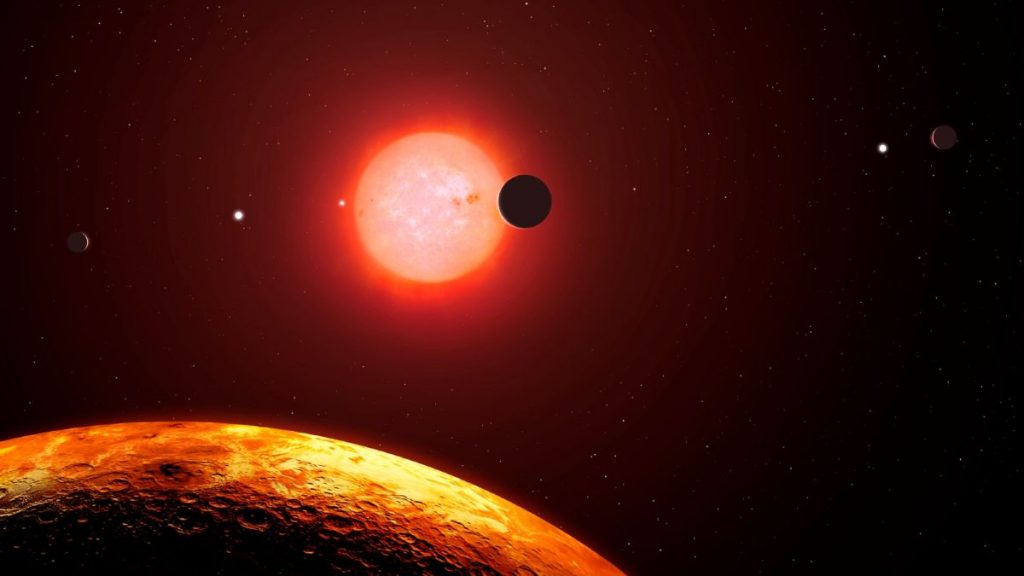Astronomers have analyzed the distant Earth-like planet TRAPPIST-1e to develop a framework that will help scientists determine if any planets outside the solar system could harbor life or could be fit for human habitation.
TRAPPIST-1e is one of seven worlds in the Trappist-1 system orbiting a relatively cool M-dwarf star located 39 light-years from Earth. The fact that all of these extrasolar planets — or exoplanets — are thought to be rocky or terrestrial worlds that are of similar sizes to Earth has made the TRAPPIST-1 system a primary focus for the search for life elsewhere in the universe.
Over the coming year, the system and TRAPPIST-1e — considered one of the most ‘potentially habitable’ exoplanets ever discovered — in particular, will be the subject of intense study by the James Webb Space Telescope (JWST).
Related: ‘Pale blue dot’ planets like Earth may make up only 1% of potentially habitable worlds
This new research used a computer to simulate the climate of TRAPPIST-1e which is almost exactly the size of Earth but with 40% less mass. The planet is located in a region around its star called the ‘habitable zone’ in which temperatures are right for liquid water to exist.
Looking at how the simulated exoplanet’s climate responds to increases in greenhouse gases, and particularly the effect of carbon dioxide on extreme weather conditions and on the rate of changes in weather, the team then compared TRAPPIST-1e to Earth.
“These two variables are crucial for the existence of life on other planets, and they are now being studied in depth for the first time in history,” project leader and professor at the Fredy & Nadine Herrmann Institute of Earth Sciences at the Hebrew University of Jerusalem (HU), Assaf Hochman, said in a statement. (opens in new tab)
What Hochman and his colleagues discovered was that TRAPPIST-1e has an atmosphere that is significantly more sensitive to greenhouse gases than that of Earth. This means that an increase in greenhouse gases in the atmosphere of TRAPPIST-1e could lead to more extreme climate changes than would be experienced on Earth.
This increased sensitivity may be because TRAPPIST-1e is tidally locked to its star. This means that one side of the exoplanet permanently faces the star and this ‘dayside’ is constantly bombarded with radiation, unlike Earth which rotates as it orbits the sun.
“The research framework we developed, along with observational data from the JWST, will enable scientists to efficiently assess the atmospheres of many other planets without having to send a space crew to visit them physically,” Hochman concluded. “This will help us make informed decisions in the future about which planets are good candidates for human settlement and perhaps even to find life on those planets.”
Hochman and the team think that looking at the climate variability of an Earth-like exoplanet such as TRAPPIST-1e could help us better understand climate changes currently underway on our planet.
In addition to this, the study of these conditions could help scientists better understand how the atmosphere of Earth could change in the future.
The team’s research is published in the Astrophysical Journal (opens in new tab).
Follow us on Twitter @Spacedotcom or on Facebook.

